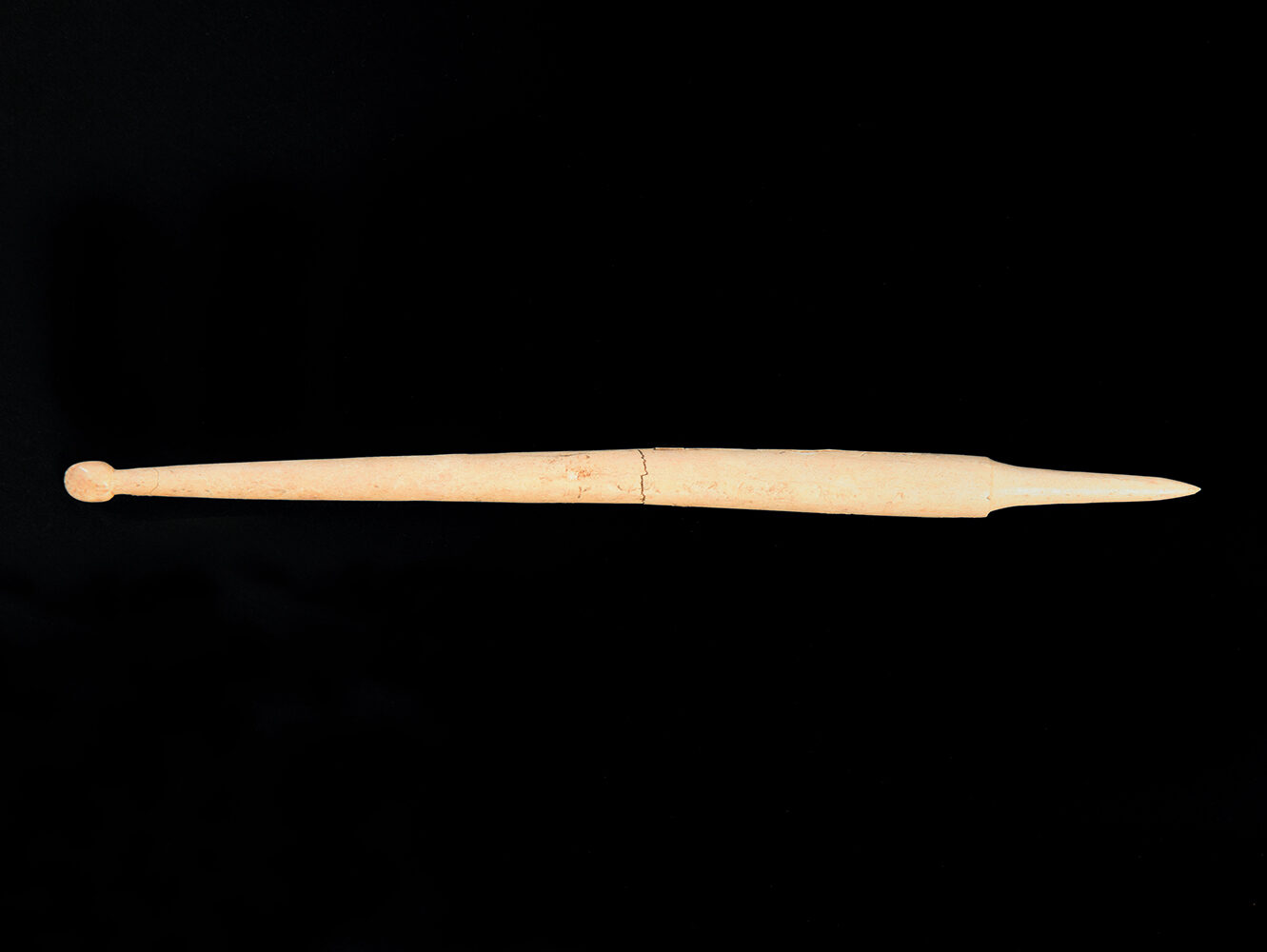
Bone
2nd c. BC
Pla de l'Horta Roman Villa (Sarrià de Ter - Gironès)
To write notes or short texts the Romans used wooden tablets with a border, the inside of which had a layer of wax on which to write. They were called tabellae ceratae (wax tablets). One of the sides had perforations that allowed cords or rings to pass through and join several tablets to make diptychs, triptychs or polyptychs, like today’s spiral notebooks.
The tool used to write on these tablets was called a stilus (stylus). It was an instrument made of iron, bronze or bone, with one end pointed and the other flat or rounded. The pointed end was used to write on the layer of wax with and the other, if necessary, was used as an eraser to prepare the tablet to write on again. It is the direct predecessor of today’s pencils with an eraser attached to one end.
Bone styluses were made on a lathe and were conical or biconical in shape. The end opposite the spike, which was used for erasing, was usually shaped like a small spatula or a kind of ball, which sometimes had a slightly flattened side.
Wax tablets and styluses were already used by the Greeks, then by the Romans and continued in use into the Middle Ages. In some cases, they were still used well into the 19th century.
